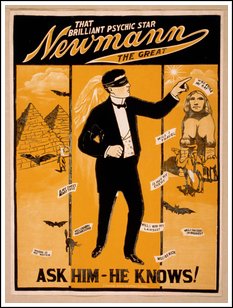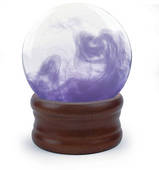Speaking With the Dead



It seems much of TV’s so called entertainment today consists largely of popular television shows like Ghost Whisperer, Medium and John Edward Cross Country. These shows would have us believe communicating with spirits is a reality. Many who are not Christian may buy into this belief. But, for Christians, what does the Bible say about talking to the dead?
The Old Testament gives ample warnings against consulting with mediums and psychics. These practices are considered to be an abomination and detestable to the Lord.
Leviticus 19:31 in the NIV says “Do not turn to mediums or seek out spiritists, for you will be defiled by them. I am the LORD your God.” Also in Leviticus, 20:27, it states "Men and women among you who act as mediums or psychics must be put to death by stoning. They are guilty of a capital offense."
Many other scriptures in the Old Testament point out God forbids consulting mediums and psychics. And the New Testament reveals the Holy Spirit will be our teacher and guide. “Saul died because he was unfaithful to the LORD; he did not keep the word of the LORD and even consulted a medium for guidance, and did not inquire of the LORD. So the LORD put him to death and turned the kingdom over to David son of Jesse.” 1 Chronicles 10:13-14


Notwithstanding these admonishments there are still people, who claim to be able to communicate with the dead. This is nothing new. Mediums have been in business for ages. The styles and tactics used may change, but the basic concept remains the same. Is there any truth to these claims? If so, the question of how they do it arises.
Most mediums, psychics and the like use a system called “cold reading.” When you encounter someone who claims they can read your mind, talk to the dead, read a person from a photograph, or other psychic stunt, here's how they do it. Once you are aware of the methods of cold reading, you can quickly spot a charlatan. Basically, what it amounts to is nothing more than a mature version of the old children’s game of “20 Questions.”


Cold reading is a deceptive psychological strategy. It can be used by anyone to give what may seem to be a genuine psychic reading. However, usually to be good at it requires some stage presence and ability to read people. Cold reading is all about getting the subject to tell you everything you need to know. The number of ways this can be accomplished may surprise you.
There are ways to gain insight into a persons’ personal character. The most common method used today seems to be the application of the “Barnum Effect.” Phineas T. Barnum (1810-1891) is credited with the statement that "There's a sucker born every minute," although there is no evidence proving he really said this. In any case, the Barnum Effect works. The strategy works by making a personality statement so general it could apply to almost anyone. However, in most cases, the subject will see it as applying to them. Newspaper and magazine horoscopes are prime examples. This concept was the subject of research in 1949.
For example, the medium may suggest something like “You are normally a shy person, but sometimes you act confidently.” The psychic may detect shyness in the subjects’ character and respond accordingly.
The psychic obtains information simply by asking for it and a good performer can ask a question whereby the subject will not remember giving the information. For instance, if a psychic is looking at someone who is obviously in their later stages of life, the guess "Your father is no longer with us” is usually a safe assertion.
Actually it is easy to prompt a subject to fill in details simply by ending a statement with "...does all this make sense to you?
Often a performer may get stuck and take a wild guess. There are many events and things in life having 50/50 chances. For instance, your child will be a boy or a girl, stock options will either go up or down, you’re married or single or your favorite team will win or lose. Statistically, half of any predictions will be right. Subjects will usually forget wrong predictions…but they never forget the half that comes out right.
There are many other ways in which a psychic can extract information. Some use the “shotgun” technique. This is when general statements are rapidly fired at the audience and the performer will study the reactions. Body language will usually give a subject away if they have hit on something pertinent.
Some alleged communication with the deceased is done without mediums, such as usingOuija boards. These have been around since the end of the 19th century. Also known as Talking Boards, they have been produced since 1890, but there is some debate over who designed it or where the name originated.
For some, the boards are a connection to a loved one who has passed away. Others are simply curious. The Ouija board, patented in 1891 by Elijah Bond, has been the debate of some curious and weird tales. One such tale happened in 1920 at a small town in California. Ouija boards were banned after an outbreak of "Ouijamania." Many town residents were behaving so oddly mental health professionals were called in to help.
A woman in the United States declared she won over a million dollars on the lottery with numbers picked by her Ouija board.
Some argue a Ouija board is nothing more than a harmless parlor game. However, others seriously believe they can be dangerous by allowing evil spirits access to humans.
There are numerous other methods people use in trying to communicate with spirits such as the following: The pendulum, for all intents and purposes, is basically the same as theOuija Board. The pendulum uses a pointed weight at the end of a line, to point to a letter.
Automatic Writing and Channeling are generally accepted as being the most potentially dangerous forms of communication because it supposedly allows a spirit to possess a subject.
Another method is séances. A typical séance usually involves two or more people gathered around a table. Candles, incense and possibly soft, mood setting music is used. In most cases, a known person who has passed is requested to return and give a sign of their presence.
Others prefer crystallomancy. This requires staring into a glass window, pool of water, mirror, or something similar to induce self-hypnosis. The common crystal ball is an example. Many believe by inducing self-hypnosis they are putting themselves on the same level as the spirits and thus, able to communicate.










